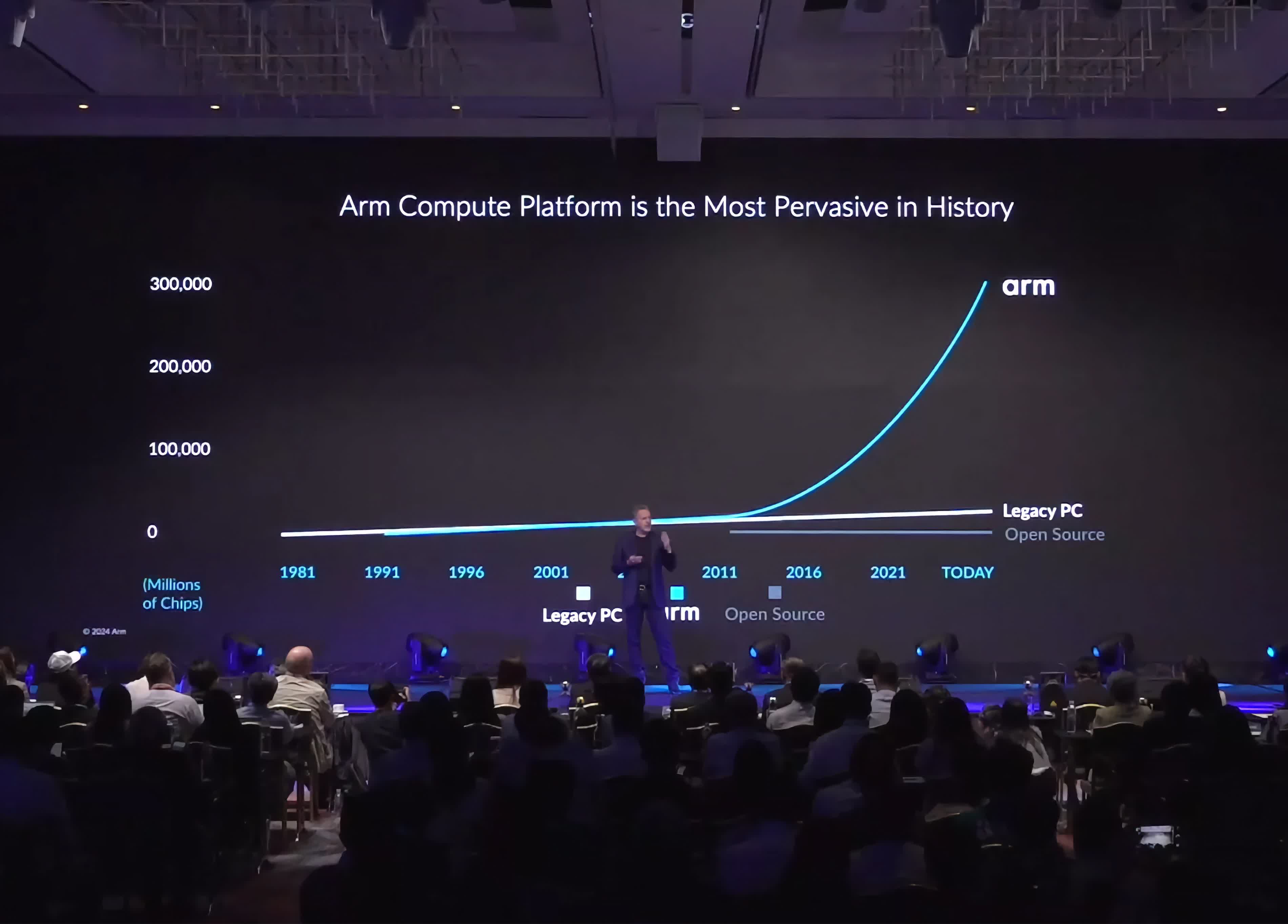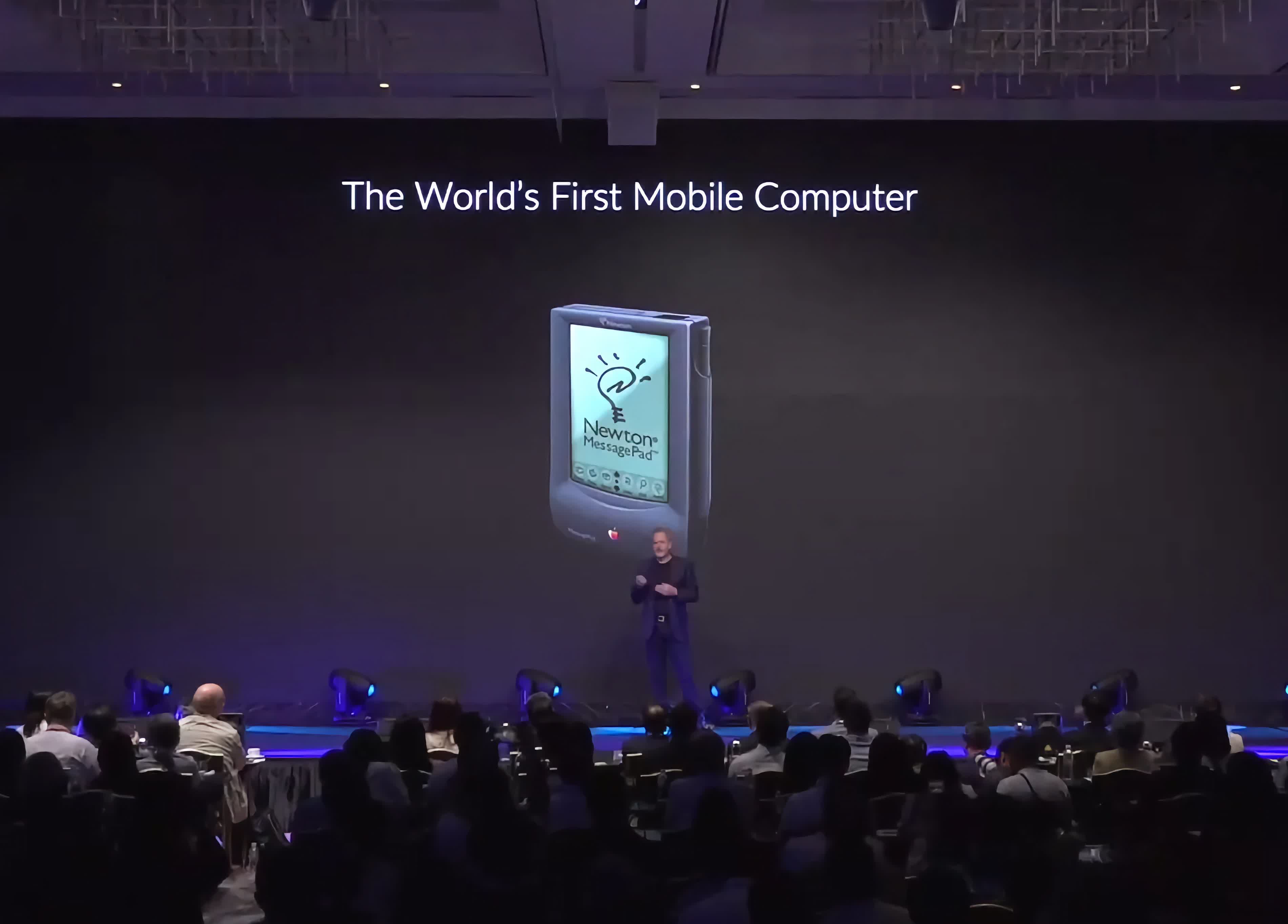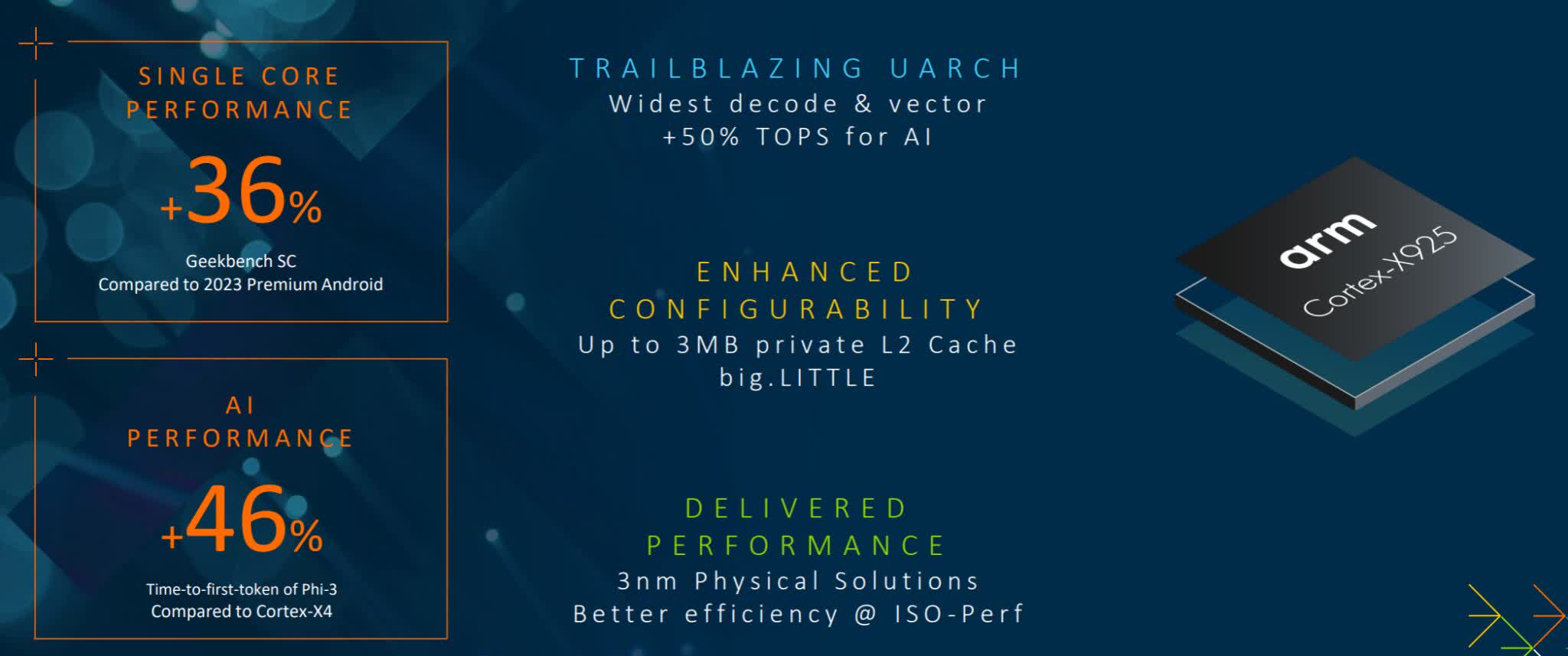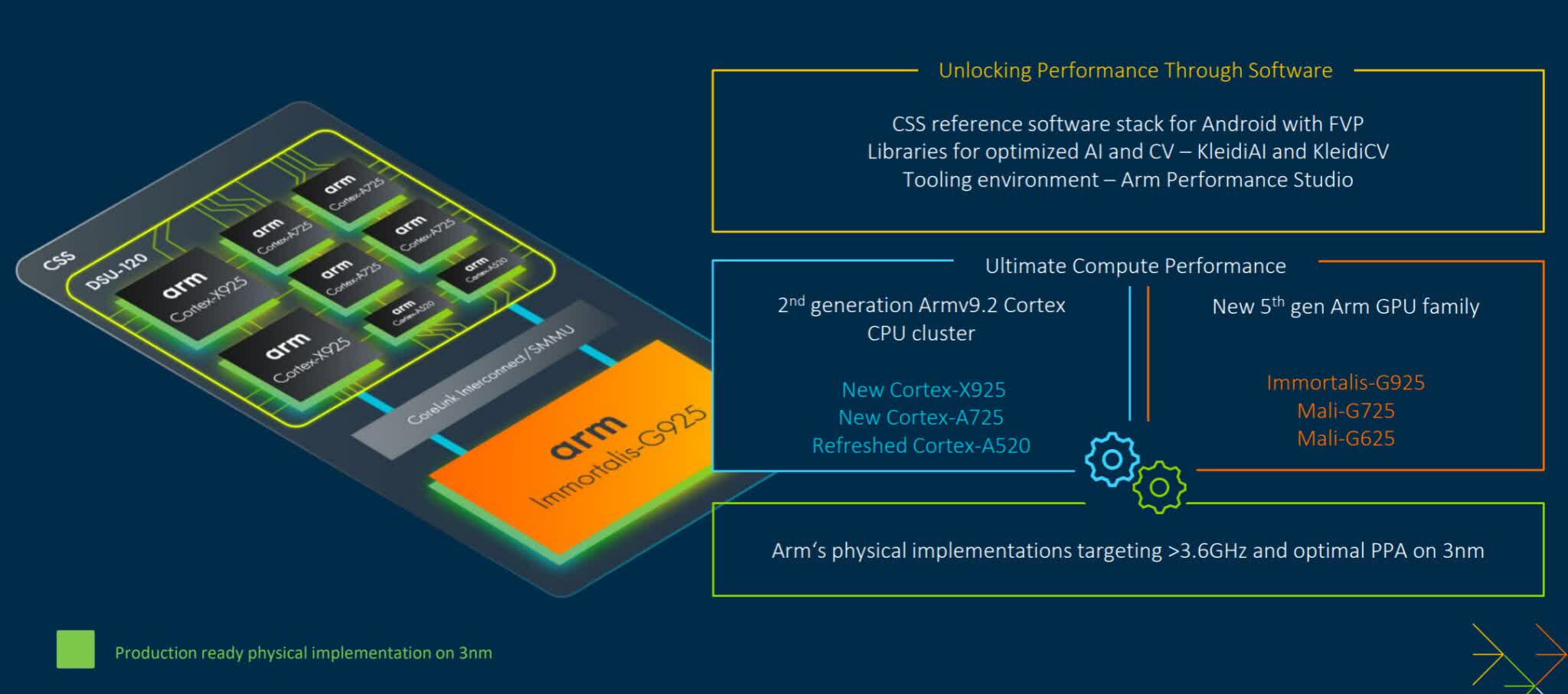In a nutshell: The third keynote in the series of Computex CEO speeches was delivered by Arm's Rene Haas, along with Chris Bergey, the SVP and GM of the Client Business at the company. Their keynote provided some historical context on the role that Arm has played in the computing industry for the last several decades, discussed new AI software tools, and expanded on important architectural announcements related to their CPU and GPU intellectual property.
Haas started with the little-known story of Arm's origin in providing the first CPU for Apple's Newton handheld device. Though it proved to be one of Apple's few product failures, the tale highlighted that building low-power computing engines which run on battery power has been in Arm's DNA since the start.
He went on to discuss how that low-power focus is as relevant today as when the company first started – both for battery-powered computing devices and for high-power server CPUs used in servers.
In fact, as he highlighted, all three of the largest cloud computing providers – Amazon's AWS, Google's GCP and Microsoft's Azure – along with Nvidia, are using or have recently announced custom chips that leverage Arm's Neoverse server CPU IP designs.
Given the concerns that are being raised about the enormous power requirements that data centers running GenAI workloads will demand, it's a timely and relevant point.
Haas also highlighted the enormous installed base of Arm-based computing devices that have been sold over the last several decades. The number and range of those devices and their applications has also led to support across an impressive range of operating systems and helped enable a large library of software development tools. To add to that suite of tools, Haas detailed the company's new KleidiAI software libraries, which are designed to provide a middleware-like set of capabilities that translate between popular AI frameworks like Pytorch and Arm-native platforms and silicon.
Given Arm's reach beyond mobile into PCs now via Snapdragon X CPUs, the cloud, data center and infrastructure market via Neoverse, and the automotive market, the impact of KleidiAI should be very far reaching.
The idea with KleidiAI is to make the process of creating AI applications on Arm systems as easy as possible and to leverage some of the unique instruction sets used in Arm designs. Now, that would be useful for a single product category like mobile phones – where Arm devices utterly dominate. But given Arm's reach beyond mobile into PCs now via Snapdragon X CPUs, the cloud, data center and infrastructure market via Neoverse, and the automotive market, the impact of KleidiAI should be very far reaching.
The company also has a version called KleidiCV for computer vision applications, which are relevant for industrial, medical and many other vertical industries.
Cortex-X925 performance improvements
After the AI discussion, Chris Bergey came onstage to talk about the company's new client IP. Arm's latest "big" CPU is the Cortex-X925 – based on the company's v9.2 architecture. According to Arm, the X925 features a grounds-up redesign that enables up to a 35% increase in IPC performance – the biggest jump ever announced by the firm. They also announced a new "little" core called the Cortex-A725 that's focused on power efficiency, and an enhanced Cortex-A520 for lower-end applications.
On the GPU side, the company's latest Immortalis-G925 offers a 37% increase in graphics performance and up to 34% for GPU-powered AI applications. As with the CPU family, there's also an upgraded Mali-G725 and Mali-G625.
In addition to the performance enhancements, what's interesting about these new CPU and GPU IP designs is that they're specifically designed to increase the range of applications and packages that can be put together. For example, it's possible to create more powerful combinations of Big.LITTLE CPU cores and different GPU elements for next-generation Arm-based PCs, AR headsets, wearables, and more.
What's included in CSS for Client
To make the process of designing these chips easier for their partners, Arm also detailed their CSS for Client offerings. First introduced for Arm-based server designs, the idea behind CSS is to help partners with the circuitry and interconnect between elements to help make a finished chip design.
Think of it as the difference between being given the basic raw materials to build a project and getting those materials, glue and nails and a complete blueprint for how to put everything together.
Arm believes they can help chipmakers take as much as a year off their development time with CSS
By bringing CSS to client devices, Arm believes they can help companies take as much as a year off their development time. In the case of client designs, CSS is specifically designed and optimized for the latest 3nm process technologies, letting companies move to these cutting-edge chip production facilities as quickly as possible.
Notably missing from Arm's compute story is IP for an NPU that could be used in traditional computing devices (they do offer a low-power Ethos NPU for IoT applications). While it seems likely that we'll eventually see that, Arm said that for many Android apps and Windows PC applications, the CPUs are still the most commonly used computing element (roughly 70% of the time, according to them).
Intel has made similar arguments for a while now, and it seems that a mix of different computing elements – CPU, GPU, and NPU – will be critical to support all AI applications for some time to come.
Finally, when it comes to Arm, it's important to remember – though still not well understood – that the work they do and the announcements they make tend to have a broader and longer lasting influence than virtually any of the individual product announcements from the major chip companies. That's because Arm's business model is to create chip designs that are licensed by many of these companies (as well as device makers like Apple and Samsung) who in turn leverage those designs into their own chips and then build them into products.
For a long time, this twice-removed status has made Arm a difficult company for many people – and the stock market – to appreciate and understand. At long last, it seems, the world has started to recognize the value of what they do and the impact on computing that they have.
Bob O'Donnell is the president and chief analyst of TECHnalysis Research, LLC, a market research firm that provides strategic consulting and market research services to the technology industry and professional financial community. You can follow Bob on Twitter @bobodtech



